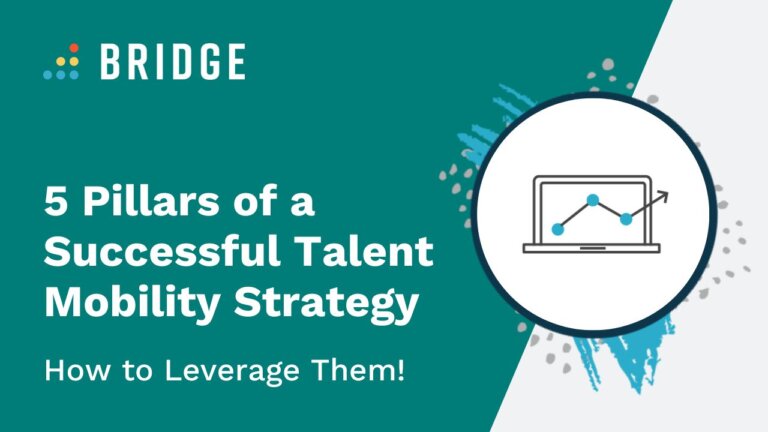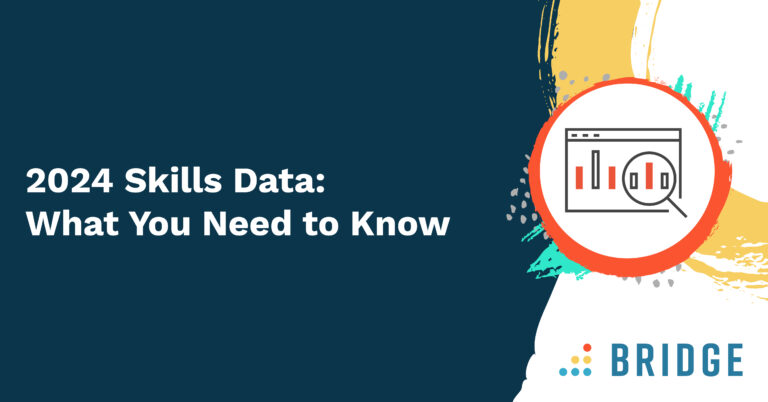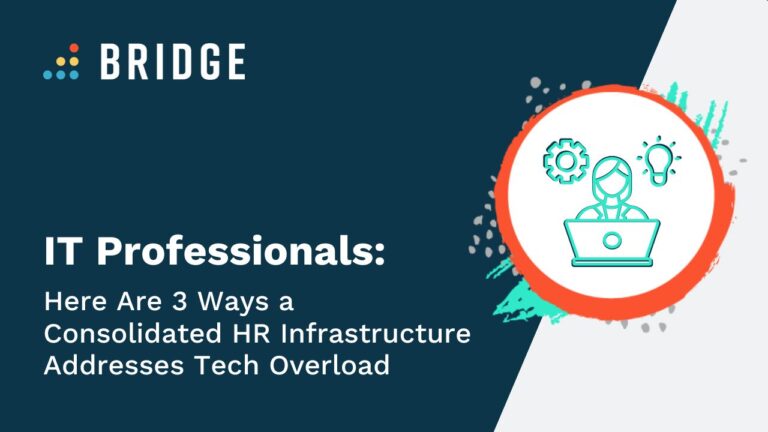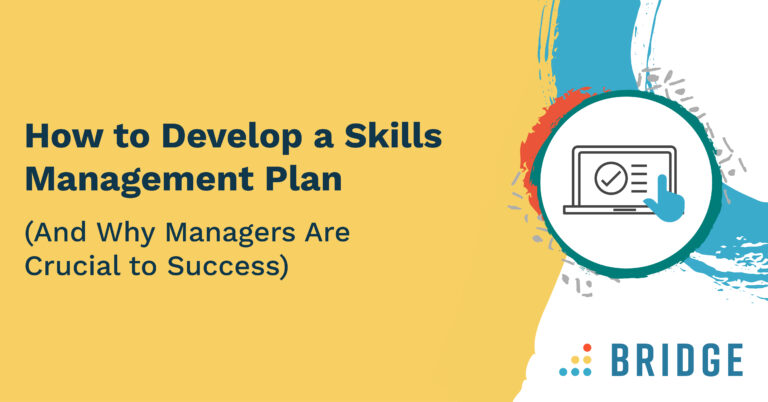A good talent mobility platform will have a lot of moving parts, from proactively recommending internal vacancies and career paths to providing relevant skills training and mentorship opportunities.
This sophisticated approach to internal mobility is a fantastic way to enrich the employee experience. Talent mobility keeps your people bright-eyed, bushy-tailed, and thoroughly engaged in their work—all while closing skills gaps across your organization. However, the huge variety of mobility features on offer beg the question: where do you start?
That’s why we’ve broken down the five pillars of a successful talent mobility strategy, giving you a handy glimpse into the approaches that’ll help you maximize the value of your platform.
What Is Talent Mobility and Why Is It a Priority?
Talent mobility is all about understanding (and leveraging) the existing skills and future aspirations of your employees, allowing you to move your people into different internal roles. This process is designed to improve retention by giving your people an internal outlet for their career ambitions while simultaneously keeping your organization up to date with the skills it needs to thrive.
Talent mobility is a particularly urgent priority due to three main drivers:
1) Career Development Improves Retention Rates
According to McKinsey, a lack of career development is one of the biggest ‘push’ factors driving employee attrition. As such, workers will likely be drawn to organizations that can offer them new challenges through exciting internal opportunities—which is the bread and butter of any good talent mobility program.
2) Workforce Agility Increases Employer Attractiveness
A 2022 report from the Business Agility Institute found that organizations with a higher agility maturity score tend to have better Glassdoor ratings, and their employees are more likely to express approval toward their CEOs. Talent mobility is the keystone of an agile workforce, ensuring that organizations can adapt to evolving needs by growing and deploying the talent and skills required to excel in any scenario.
3) Growth Prospects Keep Employees Engaged
Psychologists have found that career growth and achieving career goals have positive impacts on employee engagement. Considering that only 32% of American employees described themselves as engaged in 2022, talent mobility is a great way for any organization to counteract this downward trend.
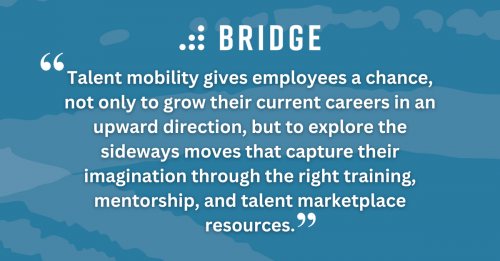
All of these drivers are united by the thread of overcoming apathy and dissatisfaction within the American workforce. Gallup estimates that some 50% of workers could be described as ‘quiet quitters.’ The bare-minimum approach to work taken by this large contingent of burnt-out or unhappy employees can only cost organizations in the form of lost productivity.
That’s why talent mobility has become so critical. Talent mobility gives employees a chance, not only to grow their current careers in an upward direction, but to explore the sideways moves that capture their imagination through the right training, mentorship, and talent marketplace resources. It’s the perfect way to ignite new interest in, and engagement with, your organization.
INCREASE EMPLOYEE ENGAGEMENT | ‘6 Simple Ways to Prevent Quiet Quitting and Drive Employee Engagement’
When to Adopt (or Refine) a Talent Mobility Strategy
If your HR department is actively running exit interviews or employee engagement surveys, you’re in a great position to canvass opinions on the state of your talent mobility offering. Or, if you don’t currently have a mobility program in place, these surveys are the perfect way to assess your employees’ appetites for internal career opportunities.
You might also discover a need for a refined talent mobility strategy by keeping an eye out for a few tell-tale signs within your organization. Ask yourself:
- Does your organization struggle to retain employees?
- Do you lack visibility into career pathing or internal opportunities?
- Can you easily access data on employee skills and career aspirations?
- Is your learning content targeted to employee career aspirations and skill gaps?
- Do you have the infrastructure to support career pathing, mentorship, and project-based work opportunities?
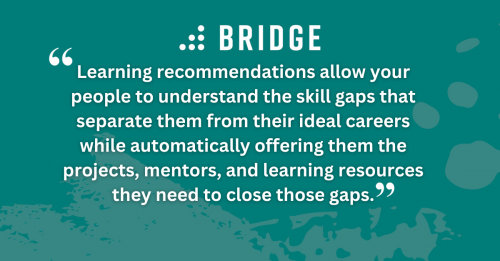
What Are the 5 Pillars of Talent Mobility?
To provide a well-rounded offering, your talent mobility program should focus on career pathing and recommended learning, job listings, workforce analytics, project-based work, and mentor marketplaces—also known as the five pillars of talent mobility.
Below, we’ve prepared a rundown on how you can take advantage of each pillar:
1) Career Pathing and Recommended Learning
Career pathing makes it easy for employees to plan out possible career paths within your organization based on existing skills. Learning recommendations help your people to understand the skill gaps that separate them from their ideal careers while automatically offering up the learning resources they need to close those gaps.
CLOSE YOUR SKILL GAPS | ‘How Bridge Makes It Easy to Teach New Skills’
2) Job Listings
A good talent mobility platform won’t just display available job openings within your organization—it’ll actively recommend roles that align with your employees’ career objectives and current positions. By displaying the required skills for each internal vacancy, your platform will let your people know exactly how qualified they are for each role (and which learning courses can get them the rest of the way!).
3) Project Marketplace
Your project marketplace is a one-stop shop for employees to explore and participate in one-off projects. This is a fantastic way for your people to gain hands-on experience developing the skills they need to support their career aspirations.
4) Mentor Marketplace
A mentor marketplace is a matchmaking feature that allows employees to offer their knowledge and experiences to colleagues currently seeking mentorship. It provides mentor recommendations for employees looking to bolster their skills with expert guidance. Once matched, the mentor and mentee can connect to discuss upcoming projects and similar topics.
5) Workforce Analytics
Your talent mobility strategy is steeped in data. Information about your workers’ ambitions, preferences, and skillsets inform the AI-powered career and learning recommendations that motivate your workforce. Analytics allow you to access your data-fuelled employee insights.
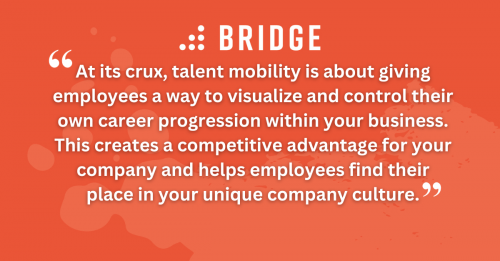
How to Start the Talent Mobility Conversation Internally
Developing a successful strategy begins with strong internal communication. To improve your talent mobility strategy, it’s essential to ask questions to key stakeholders like your L&D team, your HR department, and your employees. Here are a few to get you started:
- How do we describe our talent mobility or talent marketplace strategy currently?
- How do we do career pathing today?
- Is learning tied to our career paths today? If so, how?
- What options do our recruiters currently have for sourcing talent internally?
- How do we manage mentorships and how do employees find mentors?
- How do we facilitate employees finding internal gigs or project work?
- What visibility does HR have into the skills and skill gaps of our organizational talent?
Discussions like these can determine whether or not your organization is ready to develop a talent mobility program—and whether or not it’s time to bring in a talent mobility solution. Keep in mind that, at its crux, talent mobility is about giving employees a way to visualize and control their own career progression within your business. This creates a competitive advantage for your company and helps employees carve out their place in your unique company culture.
MASTER YOUR INTERNAL MOBILITY | ‘How Talent Mobility Empowers Employee Development’
Set Your People on the Path to Success With Bridge
Prepare your people for their next exciting career move without leaving the comfort of their current organization. Bridge offers a holistic means of delivering the skills-based learning your people need to follow their career aspirations. Get in touch today to find out how.
